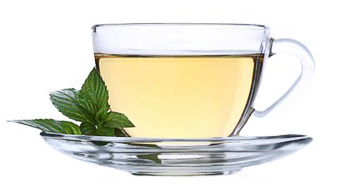Sometimes, after you’ve made your tea, you feel like it’s such a pity to throw the infused leaves away (especially if it’s and expensive or rare tea). Well, I found this article on Product Dose about recycling tea some time ago and I have been doing it since. There is a certain satisfaction to being able to use the same leaves twice for different purposes, however it doesn’t come hassle-free. If you want to recycle tea you have to be determined, decide what you’ll be reusing the tea for and have a plan.
I decided to recycle only one type of the the one I drink on a regular basis and buy in large quantities, in my case that’s Gunpowder green tea. This way the tea will have a uniform aroma. It’s also best to use unflavored/unscented tea, which is not blended with other ingredients, with the exception of Jasmine tea). I wouldn’t advise recycling teas other then green and white, because the idea of recycling is to either enjoy the tea aroma or its benefits.
After you have made your tea, you take them out of the infuser and spread them either on a clean piece of paper or on a plate. It’s good if the leaves are as little clumped as possible. You can let them dry naturally or put them over the element and take them off once they have completely dried.
Product Dose gives the following suggestions of what you can do with the recycled leaves
Bathing
Green tea is great for your skin. Potent in antioxidants, green tea has been found to protect the skin against free radical damage and has been linked to skin cell rejuvenation. For simple use in the bath, fill a cotton bag with tea leaves and place into hot water. The tea will essentially steep in the water, and your skin will soak up the beneficial brew. Once the leaves have fully opened, you can then also rub your body with the tea bag, more acutely exposing your skin to the tea leaves (I can also suggest making a strong essence of the recycled leaves instead of using the leaves themselves, so you can just pour the essence into your bathtub).
Cat Litter
Because green tea is a natural odor absorber, recycled green tea leaves can be used in a cat litter box to minimize the smell. Green tea is also characterized by natural anti-bacterial properties, creating a more sanitary environment when used in a litter box. Simply scatter dried tea leaves within the cat’s litter.
Cleaning (Carpet, Mats, Flooring)
Because tea leaves reduce odor and eliminate bacteria, they are an ideal natural element in cleaning floors and floor coverings. For carpets, spread dried tea leaves and brush them gently over the area, allowing the leaves to crumble into dust; then vacuum the remains up off of the carpet. For flooring and mats, wrap tea leaves in a damp cloth, squeeze it the cloth, and simply wipe the floor, cleaning and polishing the surface.
Cleaning (Cutting Board)
Similarly to the way that green tea can be used to clean flooring, it is also useful for taking odors out of cutting boards, as well as your hands. After preparing an odorous food on a cutting board, rinse the board with water. Spread recycled green leaves over the board and rub the board with your hands, rinsing with water afterward. The interaction between the green leaves and both the cutting surface and your hands will reduce odor in both.
Eye Pads
Because green tea is so beneficial in rejuvenating protecting the skin against free radical damage, it is ideal for reducing puffiness around the eyes. Fill a cotton bag with used green tea, dampen, and place on your eyelids.
Incense
Green tea is an ideal odor absorber, but it is also fragrant when burned as incense. A variety of incense burners, suitable for tea leaves, are available, but the leaves can also be burned within a ceramic pot or container. A boiling pot, with shallow water, containing tea leaves can also give off a pleasant aroma when gently simmering.
Mouth Wash
Using green tea leaves when gargling can both fight bad breath and kill bacteria in the mouth. Tea also contains fluorine, which strengthens teeth and fights both cavities and gingivitis.
Natural Manure
Green tea is a helpful ingredient to compost, but it can also be use don its own to enhance plant growth. Place tea leaves near the root and cover with dirt, preventing the growth of surface mold.
Pillows
Although it sounds weird at first, dried green tea leaves are an excellent option for an organic pillow. Not only soft when used in bulk, the faint aroma of the leaves is also a natural sleep enhancer. A pillow-sized mass of tea leaves will take you a while to collect, but, once you do, air out the pillow outside once a week to avoid mustiness.
Refrigerator Deodorizer
Because of its odor enhancing properties, green tea is an ideal deodorizer for the refrigerator. Because refrigeration can effect the taste of new tea, recycling used tea leaves in this capacity is recommended.
Rust Prevention
The antioxidant properties of Catechin, contained in green tea, have been found to protect iron from rust. The ingredient can create a thin coat on the surface of ironware, keeping away rust. Simply wrap tea leaves in a dry cloth, squeeze it, and with the surface of your pots and pans.


